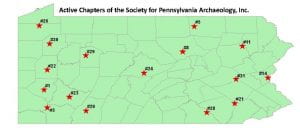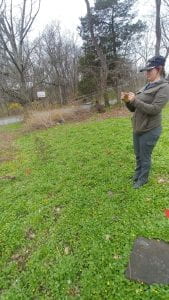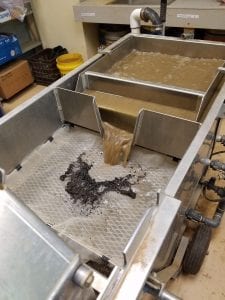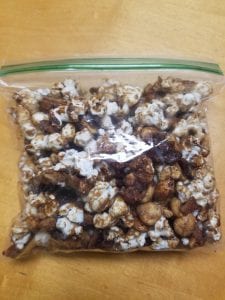
With the uncertainty caused by the COVID-19 pandemic, some of us are scrambling for internships and jobs for the summer, many of which have already been cancelled. The lack of internships can put a damper on our development both professionally and financially. Unfortunately for many of us up-and-coming archaeologists, most of the internships we applied for are not considered essential. However, there are some things we can do to combat this crisis.
Many archaeological jobs, mostly those centered around NEPA and Section 106 requirements, are essential and thus still looking for workers. Section 106 approval is required for any federal government related projects such as road construction. Alternatively,

Students from a local Community College joined SPA for an excavation
you could volunteer. I was informed by an interviewer that volunteering during times when jobs are not available looks very good on resumes because it shows your commitment to the field and improving your skills. One such organization that I am very fond of is the Society for Pennsylvania Archaeology (SPA). This is a Pennsylvania specific organization with chapters located in various parts of the state. IUP is located within the domain of the Westmoreland Chapter (#23). I have been a longtime member of the John Shrader Chapter (#21) location around the Berks and Chester County area of Pennsylvania.
The society is made up of predominantly advocational archaeologists. This does not mean that the group is a bunch of pothunters. To the contrary, these amateur archaeologists are very knowledgeable, traveled, educated, and experienced in the field of archaeology. They are also more than willing to teach and learn. I began volunteering with then when I was 14 years old and they fostered my passion for archaeology and likely led to my interest in public archaeology. I learned quite a lot from those excavations and was able to add experience to my resume before entering college.
Regardless of if you can volunteer with SPA or any other archaeological organization, volunteering in general is a fulfilling way to spend one’s time. Not only can you gain experiences, training, and networks, you can also make a difference in your community or the group. There are countless opportunities to volunteer and at least one should fit your area of interest. Some of the best connections I have made have come from volunteering. Those connections are often the strongest and most useful because they know you are committed for more than just the monetary value of the experience. In fact, one of the connections I made from SPA introduced me to the professor managing the collection I will be working with for my thesis. Just shows you that important connections can be made anywhere.
So good luck this summer and remember to cast a wide net and see what you can catch.
For more about SPA go to there website: https://www.pennsylvaniaarchaeology.com/index.htm
Follow IUP Anthropology on Facebook, Twitter, and Instagram

 buried objects of interest. Most commonly it used for detecting water, minerals, and graves but is also known to detecting anything under the sun including archaeological features and sites, coal, oil, treasure, and even missing people. It is widely accepted by those who use it and even by some archaeologists. Even with the wide acceptance in some fields, it is also widely contested because there is no scientific explanation behind it. Dowsers argue that humans or the dowsing rods are able to detect these changes and react accordingly. There are two main types of dowsing rods. The most common form used today are two thin metal wires in the shape of an ‘L’. The user holds the short end with the long side sticking straight out in front of the user. When the user crosses an object of interest, they cross. The second type is a Y shaped device usually make of willow or witch hazel that bends downward when detecting a buried object.
buried objects of interest. Most commonly it used for detecting water, minerals, and graves but is also known to detecting anything under the sun including archaeological features and sites, coal, oil, treasure, and even missing people. It is widely accepted by those who use it and even by some archaeologists. Even with the wide acceptance in some fields, it is also widely contested because there is no scientific explanation behind it. Dowsers argue that humans or the dowsing rods are able to detect these changes and react accordingly. There are two main types of dowsing rods. The most common form used today are two thin metal wires in the shape of an ‘L’. The user holds the short end with the long side sticking straight out in front of the user. When the user crosses an object of interest, they cross. The second type is a Y shaped device usually make of willow or witch hazel that bends downward when detecting a buried object.







